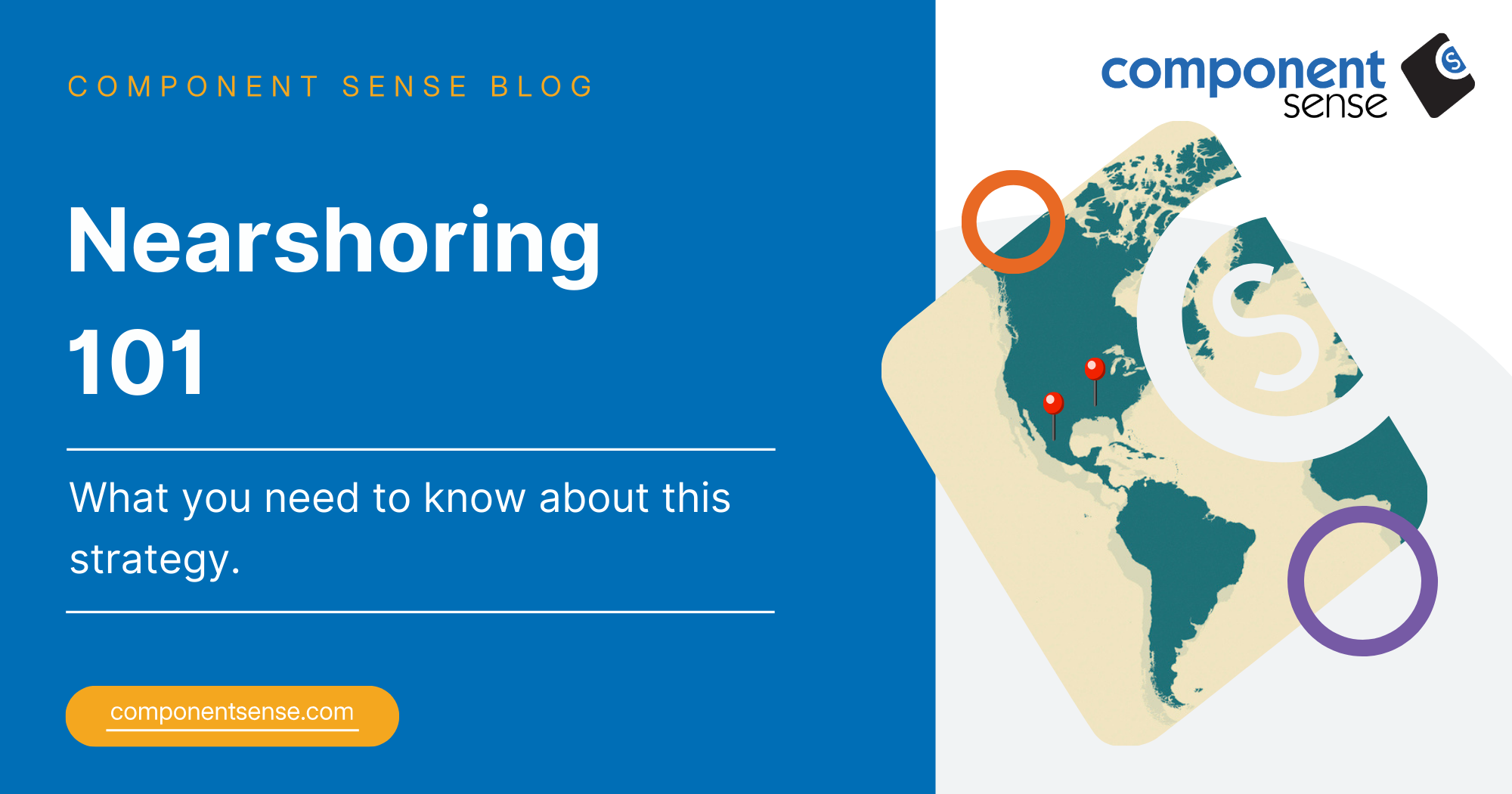Nearshoring 101

Nearshoring is gaining popularity in the electronics manufacturing industry, but what is this strategy exactly?
Electronics manufacturers are constantly seeking new ways to streamline their processes, protect their supply chain, and reduce costs. For decades, some manufacturers have relied on offshoring, the practice of moving operational processes to lower-cost countries that may be far away, to cut expenses by relying on cheaper labour.
However, global supply chains have faced unprecedented challenges in recent years. Heightened geopolitical tensions, an increasing focus on sustainability, environmental-related disruptions, and rising costs are influencing companies to shift to a nearshoring model instead.
What is Nearshoring?
Nearshoring, also known as regionalisation or proximate sourcing, involves relocating a business’s operations to a country geographically closer to the home market.
Unlike offshoring, which sends production to far, lower-cost regions, or reshoring, which brings overseas operations back home, nearshoring offers a middle ground of cost savings and supply chain resilience.
Benefits of Nearshoring
With nearshoring, companies can maintain financial advantages while benefiting from shorter supply chains, improved sustainability, and enhanced quality control.
Supply Chain Resilience
Nearshoring offers a level of supply chain resilience that offshoring often cannot provide. The ongoing US-China trade war has highlighted the vulnerabilities of global supply chains. With a shorter supply chain, manufacturers can quickly mitigate volatile circumstances such as natural disasters, global trade disruptions, and political instability. Additionally, nearshoring eliminates multiple links in the supply chain that are susceptible to risks like port congestion, cross-border regulatory changes, and customs delays.
Communication is also significantly easier within similar time zones, enabling real-time collaboration between manufacturers, suppliers, and logistics partners.
Improved Sustainability
Contributing to Environmental, Social, and Governance (ESG) goals, nearshoring plays a significant role in reducing the environmental footprint of supply chains. With shorter-distance transportation, manufacturers can considerably reduce their carbon emissions by reducing or eliminating the need for air freight. This is especially important as the electronics industry accounts for 4% of global greenhouse gas emissions.
 As consumers' environmental concerns grow, adopting more sustainable strategies like nearshoring will give companies a competitive advantage.
As consumers' environmental concerns grow, adopting more sustainable strategies like nearshoring will give companies a competitive advantage.
Enhanced Quality Control
Nearshoring enhances quality control by providing closer oversight of the manufacturing process—ensuring product quality. Proximity allows manufacturers to conduct more frequent on-site inspections and quickly identify and rectify production issues. Additionally, nearshoring helps ensure better regulatory compliance, as manufacturers can more easily monitor supplier practices and ensure adherence to industry standards, minimising the risk of non-compliance and ultimately enhancing product reliability.
How Component Sense Supports Nearshoring Strategies
Nearshoring plays a crucial role in excess and obsolete (E&O) inventory management, ensuring surplus components are easily accessible. Given our partnership with DSV, Component Sense is uniquely positioned to support nearshoring strategies with strategic warehouse locations around the globe—including Mexico, Vietnam, Hungary, and more. With warehouses in multiple regions, you can quickly pivot to different locations as needed, ensuring a resilient supply chain that can navigate geopolitical uncertainties, natural disasters, or other global challenges.
By partnering with Component Sense, your excess and obsolete (E&O) inventory can be stored securely at one of our DSV locations, local to you. This means that your E&O stock is out of your warehouse but still within arms reach during the redistribution process. You can get your excess back quickly should your priorities change, all while enjoying monthly payments as the excess is sold.